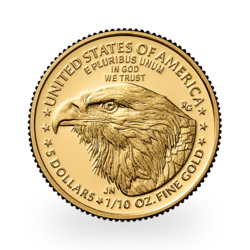The Bank of International Settlements (BIS) is owned by 63 central banks around the world and accounts for approximately 95% of world GDP. Its headquarters are in Basel, Switzerland, and it works in the area of monetary and financial stability. Buried amongst the broad layers of information on Basel III lies a key part in the upcoming reforms—The Net Stable Funding Ratio (NSFR).
BIS has defined this change as the amount of available stable funding relative to the amount of required stable funding. Pretty straight forward to work out. This however is a key aspect of the Basel III reform and as previously mentioned eliminates the reckless lending that caused the crisis in 2008 onwards.
What we have to understand though is this change is new territory for banks, and will lead to some of the smaller sized having to close their doors for good. Pre 2008, you could walk into a bank or building society and after giving your name and shoe size you could leave with a 125% mortgage. As crazy as it sounds that is what is was like. Such was the faith in the house price boom, banks saw this as such little risk thinking their investment could easily be swallowed up with the ludicrous incremental house price increases we were seeing at the time. This lending criteria was not just “loose” against mortgages lets not forget, as there are many other types of financing banks offer.
So the NSFR is the critical element we must look at when assessing how the Basel III rules will affect banks. With fiat depreciating faster than a dropped rock over time, what other option do banks have to lend against? Well it is no secret that banks have been buying gold for the last few years, and it is also no secret that the D-Day date of Basel III has been delayed over the years with Covid the latest excuse.
Now the cynic in me says it’s purely been another gift opportunity to smash down the price of paper gold while buying cheap and loading the vault floors up. However this June 28 date is fast approaching and for every day that elapses, it becomes more difficult for it to be put back again. There has been an extension granted for the LBMA but critically this doesn’t affect the global view on NSFR. So physical gold (not paper) reclassified as Tier 1 should drive a physical market. No longer can paper gold be shorted as we have seen over the years of manipulation. So what are the ways around it I hear you ask. There is no way the banks will accept it, and must already have a plan up their sleeve to bend the rules. But what if they don’t need to? What if these new Basel III rules work in their favour, and instead of the price smashing over the years, it becomes in their interests for the price of gold to go higher?
At current levels, around $1720 buys you an ounce of gold. If you have several tonnes of it sitting in your vaults that is allocated and you can lend against this then surely it would be in the interests of the banks for the prices to explode higher. Manipulated inflation/price fixing if you will.
To put into perspective just how important the NSFR is to understand, more gold is traded daily in London than is produced through mining in a year. Just consider that. It is estimated that nearly 95% of that gold traded daily in London is unallocated paper gold. Similar figures exist in the COMEX in New York, and around 1% ever insisting on delivery. We can easily deduce from these figures a rough percentage of how many are unallocated naked shorts, and it’s a big figure.
So how is the gold allocation going to be proven? Well simply put banks are going to get audited prior to the deadline, therefore If physical is required before the audit, banks have to insist on delivery and quickly. So where is all this gold going to come from when we know a huge amount traded is paper? The exchanges have been settling premiums at futures delivery dates for years when demand gets too much. And the allocations being demanded will far exceed the logistical ability to deliver. So what then happens? The COMEX, LBMA and others collapse? What about the naked short positions? They have to be closed before the audit, otherwise it would be like a murderer handing himself into the police with the gun in his hand and the bullets missing. So why would any bank currently with physical gold in their possession want to sell any of it, particularly at the current price level? Well they wouldn’t would they?
So why is there no reflection of this in the current price of gold is the next question. Well unequivocally there is I would argue. Why else could gold be sitting at this level? (and could dip a little further in the short term) Almost every other commodity—even oil that went to minus numbers in March is sitting above their pre Covid levels.
Some have far exceeded that level as well. Take silver—arguably the most manipulated metal of them all and it is nearly 50% up on pre-Covid levels. The answer is the paper naked shorts need to unwind and we are dangerously close to that timeframe. I suspect a bottom somewhere near the 1700 level will be formed and when the shorts cannot push any further as time is against them, we will see an upside rise fairly quickly. Let’s explore this upcoming scenario.
Say you are a big commercial bank that wants delivery of huge physical Gold in the April delivery month. If the COMEX was to turn around and offer a cash settlement as has been the case for years, the big commercial bank may refuse. After all if it isn’t available, it shouldn’t have been offered. What this could lead to is essentially an “I owe you” from the COMEX to the bank or a further rollover into next month.
However if 50 big commercial banks come knocking at the door, it will be impossible to satisfy this demand. At this point a force majeure may well be played, nonetheless if you have a shortened deadline and need the physical gold no money settlement would be acceptable, as the price of gold could go up exponentially before January 2023 so cash with premium isn’t attractive.
So what happens next? Legal proceedings against the COMEX perhaps? But would the banks want that when it could expose their naked shorts? Perhaps they wouldn’t care given the previous penalties dished out are worth far less than the proceeds gained from the crime. But they still need their physical. The COMEX will need to source it, and potentially pay way over the odds to get it. Will that cause them to collapse? Potentially. What would happen to the price of gold and silver if the COMEX didn’t exist? It would explode to the upside—it’s a moment every precious metal investor has been longing for as it would create a stable and fair price.
How this plays out is anyone’s guess as there are so many scenarios there are no rulebooks to refer to. Putting to one side how messy the next few months could get, the upshot is with paper shorts out of the question from June 28 2021, banks being audited before the end of Q2 2021, and a mass, mass shortage of gold; we can almost ignore the macros at play in the current world as Basel III is a lot bigger and a trade opportunity that cannot be missed. Prices cannot hang around for much longer at these levels, and as we head towards the end of Q1 we would expect prices to begin their ascent to much higher levels.
Original source: Investing.com
Reproduction, in whole or in part, is authorized as long as it includes all the text hyperlinks and a link back to the original source.
The information contained in this article is for information purposes only and does not constitute investment advice or a recommendation to buy or sell.

















